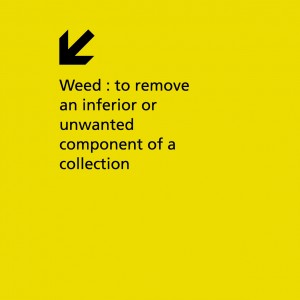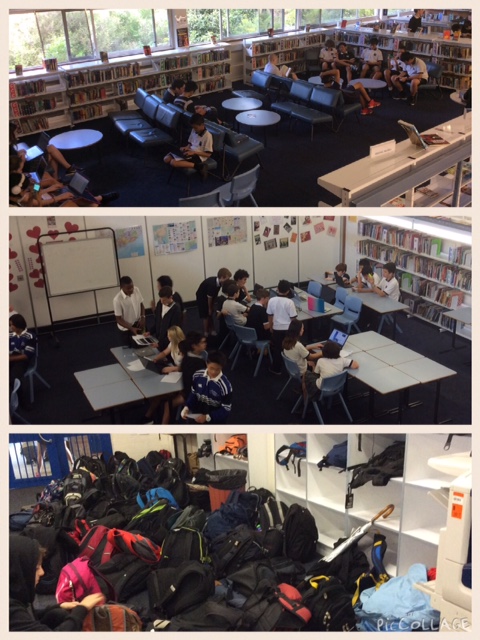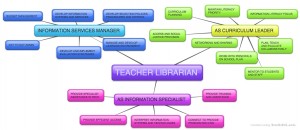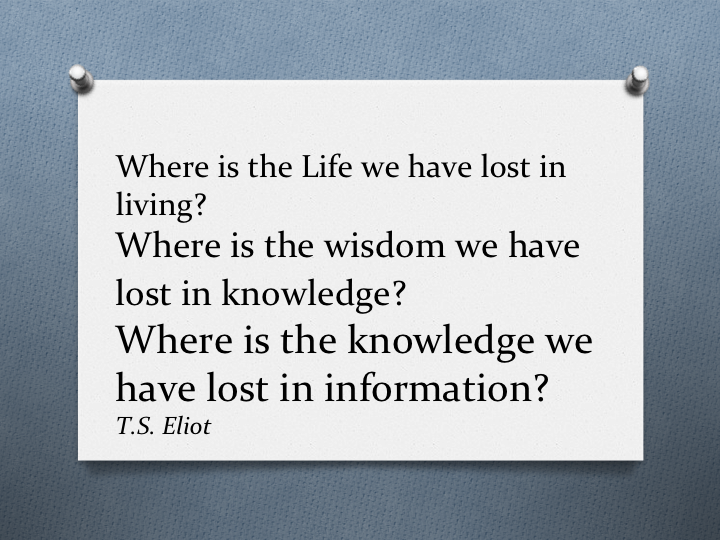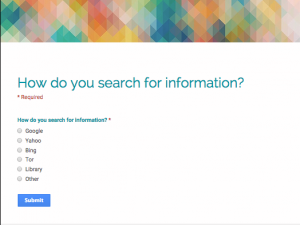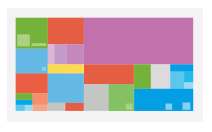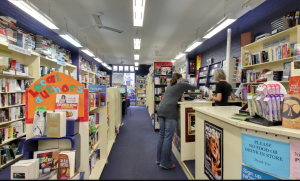As a requirement of Part B of the first assignment in ETL503, the following is an annotated resource list for a Stage 5 (Years 9 and 10) English unit of study called…
“What/how does dystopian fiction teach us about social responsibility?”
There is also a livebinder to provide a curated format for digital artefacts and information.
ETL503 ASSIGNMENT 1 PART B:
As a sub-genre of Science Fiction, resources in dystopian fiction come in a vast array of choices. This resource list provides examples of each of the different types of resources that should be made available to teaching staff and students in order to fulfill the requirements of the syllabus outcomes to be achieved in this unit of work.
Resourcing the curriculum for this unit of work and for this target audience combines the facets of the Teacher Librarian’s role of both building the library collection and collaborating with faculties to fulfill curriculum requirements. Having a guiding question provides a framework around which the appropriateness of resource selection can be measured. Resources need to be provided that will support teachers as they plan and prepare learning experiences, supply students with resources that fulfill the full range of text type requirements, provide students with sufficient choices of text to complete assessment task items and cater to their learner characteristics (Hughes-Hassell, 2005 p. 43), build the library collection in order to sustain the learning beyond the completion of the unit of work and entice these students to engage in further recreational reading in this genre. In this way, this unit of work becomes the catalyst as the Teacher Librarian establishes a resource foundation that can be built upon by utilising the budget in an ongoing way as new items are released in this genre by Young Adult authors and publishers, and multi-modal text choices become available in an expanding market in this area and these can be added to the Library Management System for ease of access.
Additional criteria relating to the copyright requirements of some of these resources may need to be explained by the Teacher Librarian e.g. censorship classifications on DVD, downloading of digital artefacts etc.
Selection criteria:
The Stage 5 English Curriculum (Board of Studies, 2012) has specific expectations regarding the variety of texts that should be met by students.
Text Requirements:
- spoken texts
- print texts
- visual texts
- media, multimedia and digital texts.
Including:
- texts which are widely regarded as quality literature
- a wide range of literary texts from other countries and times, including prose fiction
- texts written about intercultural experiences
- a wide range of cultural, social and gender perspectives, popular and youth cultures
- texts that include aspects of environmental and social sustainability
- nonfiction, picture books, graphic novels
- an appropriate range of digital texts, including film, media and multimedia.
General Capabilities and Cross Curriculum:
- Ethical Understanding
- Sustainability
- Literacy
- Critical and Creative Thinking
- Civics and Citizenship
Developing a set of selection criteria for choosing resources for this unit of work should also lie within the established school policy of Learning Resources Selection (Det.wa.edu.au, 2015; Education.qld.gov.au, 2015; Government of South Australia, 2004). In particular it should fulfill
- The resource is appropriate to the target audience – style, pace, point of view, etc.
- The resource is relevant to the curriculum and learning outcomes of this unit
- The resource meets the additional guided inquiry requirement of this unit and includes aspects of social responsibility that can be explored through class activities
- The resource is suitable to improve literacy outcomes for students – reading level, vocabulary, aspects of creative writing etc.
Selection Aids:
There are a wide variety of selection aids available for this unit of work. My preference is to include my Professional Learning Network (PLN) in this process and so I began by reaching out to connections who could provide unit plans and ideas as a framework to build a resource selection. This is an important resource for Teacher Librarians because we are not subject curriculum experts in all Key Learning Areas, so being able to ask experienced practitioners is an excellent means to value add to the Teacher Librarian role in our school. Gathering and maintaining a PLN and being able to tap into this expertise, is an important aspect of the resource selection process.
Other selection aids included publisher websites, genre blogs, library catalogues from a variety of school libraries, teacher owned and maintained websites, various LibGuides, GoodReads website, OCLC world catalogue.
Annotated Resource List:
- Introductory programming and short story writing support
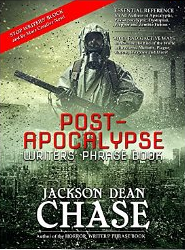 Chase, J. (2015). Post-Apocalypse Writers’ Phrase Book: Essential Reference for All Authors of Apocalyptic, Post-Apocalyptic, Dystopian, Prepper, and Zombie Fiction. CreateSpace Independent Publishing Platform.
Chase, J. (2015). Post-Apocalypse Writers’ Phrase Book: Essential Reference for All Authors of Apocalyptic, Post-Apocalyptic, Dystopian, Prepper, and Zombie Fiction. CreateSpace Independent Publishing Platform.
This resource caters to the specific target audience – both staff and students. It is available in both paperback and eBook (through Kindle) and is a brand new edition. It specifically targets writing support for this genre and would be an excellent addition to teacher reference materials in the school library. Purchasing current, relevant resources for the library collection supports student learning, invigorates teacher planning and builds collaboration opportunities between faculty and library staff.
- Novel study – Fiction compilation to be added to library collection
 Adams, J. (2012). Brave new worlds. San Francisco, Calif.: Night Shade Books.
Adams, J. (2012). Brave new worlds. San Francisco, Calif.: Night Shade Books.
The library collection should already include a wide range of books in the dystopian genre which are suitable for student use in this unit of work. Famous older titles like George Orwell’s 1984, Aldous Huxley’s Brave New World will be mixed with more current best selling series like Suzanne Collins’ The Hunger Games, Allie Condie’s Matched and Veronica Roth’s Divergent series.
This book, Brave New Worlds, is a collection of dystopian tales written by some of today’s most visionary writers, including Neil Gaiman, Paolo Bacigalupi, Orson Scott Card, Kim Stanley Robinson, and Ursula K. Le Guin.
It would make an excellent addition to the library collection both for student access to inform their creative writing, and for staff access as a lesson planning resource.
- Novel study – Fiction book to be added to library collection
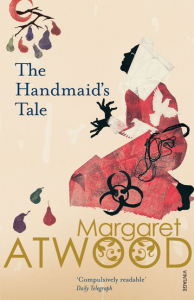 Atwood, M. (1986). The handmaid’s tale. Boston: Houghton Mifflin Company.
Atwood, M. (1986). The handmaid’s tale. Boston: Houghton Mifflin Company.
The dystopian fiction genre offers a plethora of novels to choose from. This particular choice from Margaret Atwood is one that I believe is a must to offer to a gifted and talented Stage 5 audience. Atwood’s story construction and theme coverage makes it approachable for the young adult reader while providing high quality narrative construction.
- Short story
Vonnegut, Kurt Jr. “Harrison Bergeron.” 1961.
With central themes of the danger of total equality and the power of television, this short story introduces some themes that could be utilised by students in their assessment writing task.
The structure of the short story gives an opportunity to analyse this text type and help students to scaffold their own writing task.
This short story is also considered a classic in both form and content and therefore fulfills the syllabus requirement of “quality literature”. There are many online resources available to support student analysis of this text, including Spark Notes (Sparknotes.com, 2015)
- Journal Article
Ames, M. (2013) Engaging “apolitical” adolescents: analysing the popularity and educational potential of dystopian literature post 9/11 in The High School Journal, Volume 97, Number 1, Fall 2013, pp. 3-20 (Article) http://muse.jhu.edu/journals/hsj/summary/v097/97.1.ames.html
The journal article is selected for both its content and format. It provides an example of professional journal writing for Stage 5 students who are developing their essay writing skills. It specifically addresses the guided inquiry focus. In PDF format and used for educational purpose, this article can introduce students to style, context, form. Selecting these types of resources – requiring additional search skills to access them and provide them to staff to use with their students, value adds to the relationship between Teacher Librarian and faculty teaching staff.
- Trailers
Sites.google.com, (2015). Intro to Dystopia – {a shift in perspective} Mr. Celini’s Class Site. [online] Available at: https://sites.google.com/a/ccsd.edu/a-shift-in-perspective/struggles/units-2011-12/intro-to-dystopia
Film trailers, made available through the LMS, can be an excellent resource for teachers to utilise in lesson planning. Providing easy access to trailer resources – by downloading onto the school’s digital library website or other non-streaming resource placement, can provide quick easy access to enhance lessons and engage students.
- Posters
Burningbooks.org, (2015). BURNING BOOKS POSTERS. [online] Available at: http://www.burningbooks.org/posters-by-burning-books/category/6.html
Posters provide an opportunity to target visual literacy and enhance the learning outcomes of this unit of study. The library can produce these resources on site (subject to copyright requirements) and provide a selection to staff members to be used during the unit study. In this way, the library can develop a collection of additional forms of resources that enhance the service being provided to teaching staff.
- Animation
YouTube, (2015). Sci-Fi City – Future Dystopia 3D Animation. [online] Available at: https://www.youtube.com/watch?v=b3bFi7ooyfY
Short animation (1 minute), which can be made available through the LMS or via edmodo.
This type of resource adds an innovative element to resourcing this unit of work. It adds another form of literacy development and as an aid to creative writing through visualisation of dystopian society. Students may even have the skill set to create an animation as a means to explore this genre further.
- DVD
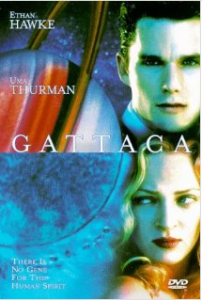 DeVito, D., et al (1998). Gattaca. [DVD] Columbia TriStar Home Video (Firm)
DeVito, D., et al (1998). Gattaca. [DVD] Columbia TriStar Home Video (Firm)
There are many movies available in this genre, which would be suitable to study in this unit. Many of them include themes of social responsibility, which would enhance the guided inquiry and inform the assessment task for this part of the unit. Purchasing DVDs provides multi-use resources in the library collection. Film studies are a required component of Stage 5 English.
Starring Ethan Hawke, this sci-fi thriller about a man who dares to defy a system obsessed with genetic perfection. Hawke’s role is as Vincent, an InValid, who assumes the identity of a member of the genetic elite to pursue his personal goals. This storyline would be particularly advantageous for the themes of this unit of study and the guided inquiry focus.
- Graphic novels
Talbot, M. et al (2014) IDP: 2043: A Graphic Novel Freight Books
“In this recent graphic novel, the cream of British and European writers and artists have collaborated to explore life in Scotland thirty years into the future, with each paired writer and artist being given one chapter.” (Low, 2015)
This graphic novel explores what the UN calls Internal Displaced Persons – refugees who are still in their country of origin – after the currently predicted rise in sea level. The issues raised in this work would again reinforce the guided inquiry aims of this unit of study. This resource focuses on developing visual literacy for this unit of study and also makes an attractive addition to the library’s graphic novel collection.
Additional resources:
Curation of resources available in digital formats, can be provided to faculty staff using lots of different webtools available for this purpose. The following livebinder is an example of how this can be achieved and includes the resources displayed above in a format that is easily accessible to faculty members interested in utilising these resources.

